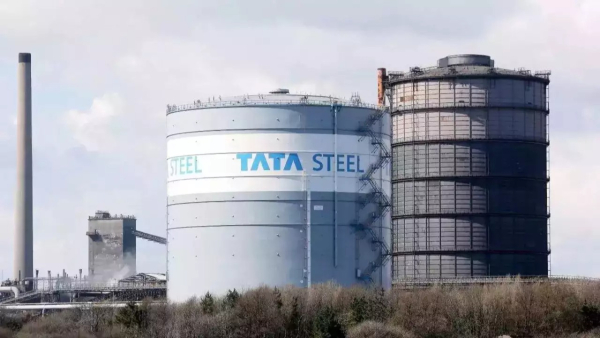Tata Steel, a global steel manufacturing giant, reported a significant decline in its consolidated net profit for the third quarter of Fiscal Year 2025 (Q3 FY25), which ended on December 31, 2024. Net profit plunged 36.37% year-on-year (YoY) to ₹326.64 crore compared to ₹513.37 crore in the same period last year.
Revenue dipped 3.01% YoY to ₹53,648.30 crore in Q3 FY25, compared to ₹55,255.80 crore in the corresponding quarter of the previous year.
Key Factors Contributing to the Decline:
- Weak Global Steel Prices: The global steel market faced significant headwinds during the quarter, with weak demand and intense competition leading to a decline in steel prices.
- High Inflation and Rising Interest Rates: The global economic slowdown, coupled with high inflation and rising interest rates, impacted demand for steel across key sectors such as construction and automobiles.
- Geopolitical Uncertainties: Geopolitical tensions and the ongoing global conflicts created uncertainty in global markets, impacting trade flows and demand for steel.
- Increased Input Costs: Rising input costs, including raw materials like iron ore and coking coal, squeezed margins for steel producers.

Regional Performance:
- India Operations: Indian operations witnessed a decline in profitability due to lower steel prices and increased input costs. However, the company’s Kalinganagar plant continued to ramp up production, contributing to overall output.
- European Operations: The European operations continued to face challenges due to weak demand and high energy costs. The company has been implementing various cost-cutting measures to improve profitability in this segment.
Operational Highlights:
- India Deliveries: India deliveries rose 8% YoY to 5.29 million tonnes in Q3 FY25, driven by steady domestic demand and strategic presence in exports.
- Kalinganagar Ramp-up: The Kalinganagar plant continued its ramp-up, with a new blast furnace producing 0.56 million tonnes during the quarter.
- UK Operations: The UK operations faced challenges, with EBITDA losses despite some improvements.
- Netherlands Operations: The Netherlands operations reported nil EBITDA for the quarter.
Financial Performance:
- Revenue: Consolidated revenue declined 3.01% YoY to ₹53,648.30 crore.
- EBITDA: EBITDA declined 5.37% YoY to ₹5,994 crore.
- Net Profit: Net profit plunged 36.37% YoY to ₹326.64 crore.
- Debt Reduction: Net debt declined by approximately ₹3,000 crore QoQ to ₹85,800 crore.
Outlook:
The outlook for the global steel industry remains uncertain due to ongoing economic challenges and geopolitical risks. However, Tata Steel is taking several measures to navigate these challenges, including:
- Cost Optimization: The company is focusing on cost optimization measures, such as improving operational efficiency and reducing energy consumption.
- Capacity Expansion: Tata Steel is expanding its production capacity, particularly in India, to capitalize on long-term growth opportunities.
- Focus on Value-Added Products: The company is focusing on producing higher-value-added steel products, such as specialty steels, to improve margins.
- Research and Development: Tata Steel is investing in research and development to develop innovative steel products and technologies.
Investor Perspective:
The decline in profitability in Q3 FY25 is a concern for investors. However, the company’s long-term growth prospects remain promising, driven by India’s strong economic growth and the increasing demand for steel in infrastructure and other key sectors. Investors should closely monitor the company’s performance and the overall economic outlook before making any investment decisions.
Conclusion:
Tata Steel’s Q3 FY25 results reflect the challenges faced by the global steel industry, including weak demand, rising input costs, and geopolitical uncertainties. While the decline in profitability is a concern, the company’s long-term growth prospects remain promising, driven by India’s strong economic growth and the increasing demand for steel in infrastructure and other key sectors.


